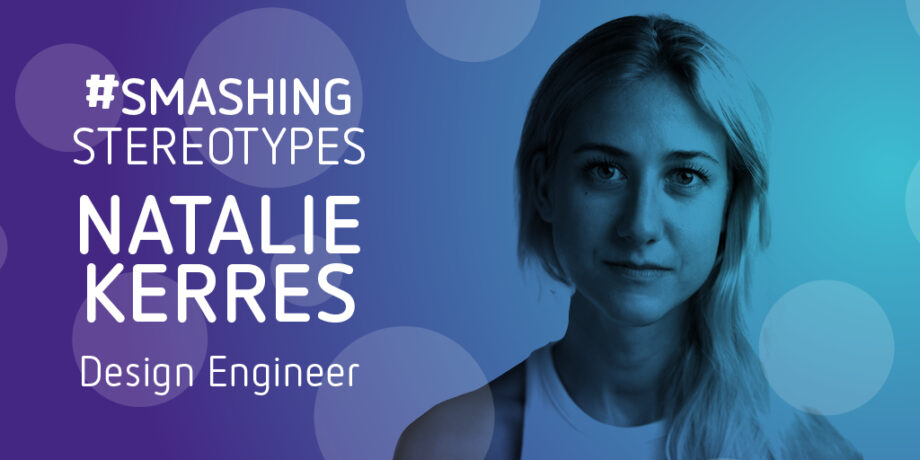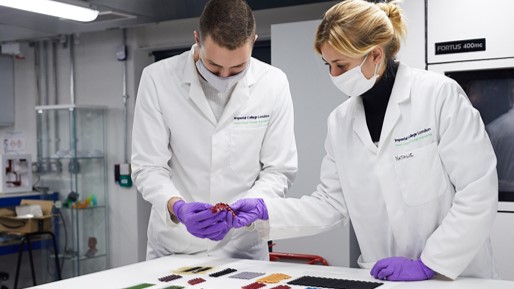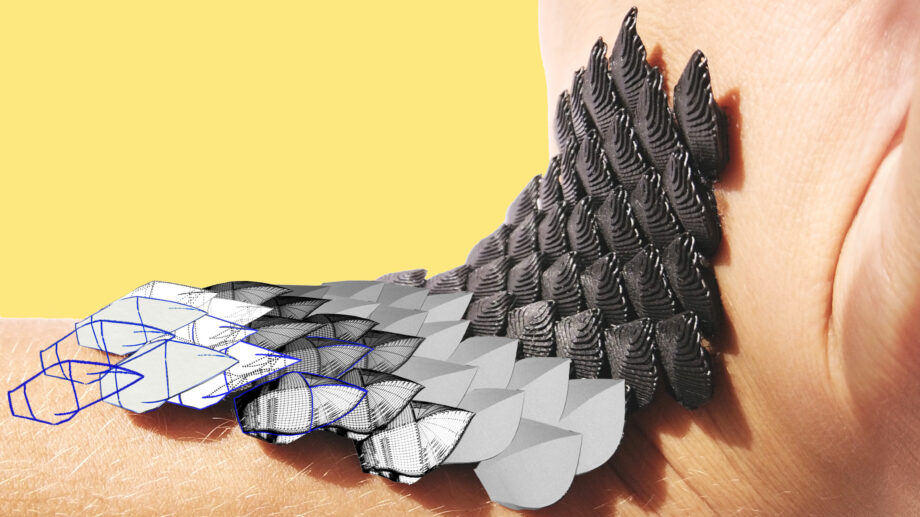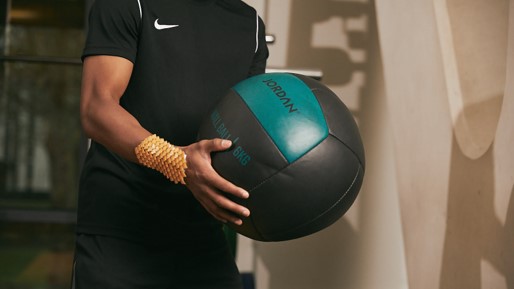
Natalie Kerres
Design Engineer
Founder and CEO, SCALED
Connecting the worlds of science and art
Natalie worked as a fine jeweller while studying Industrial Design at the University of Applied Arts in Vienna. She then undertook a double degree (MSc & MA) in Global Innovation Design run jointly by the Royal College of Art and Imperial College, London.
Her start-up, SCALED, grew out of her degree project and received funding from the MedTech SuperConnector, the Royal Academy of Engineering, the Royal Commission of the Exhibition 1851 and Innovate UK to develop a flexible, wearable, protective layer inspired by animal scales.
Scales.
Each of these animals uses their scales to adapt and protect them from harmful environments and threats. Inspired by nature’s ingenious solution, my company, SCALED, was born. We create custom-fit, protective materials to prevent injuries to the human body. But let’s start from the beginning.
For as long as I can remember, I’ve considered myself creative and naturally curious. As a child, I was always creating and building stuff and growing up, I was labelled an artist, rather than a scientist.
The need to create stayed with me as I fell into the world of fine jewellery. I started when I was 15, got my master’s degree when I was 21, and then worked in fine jewellery. The fine jewellery industry is all about customisation and personalisation, creating pieces that can be worn for decades without being taken off (take a wedding ring, for example), and it was as an artist that I first explored using new technologies such as 3D printing.

I signed up for the Global Innovation Design course run by the Royal College of Art and Imperial College in London. It combines design with engineering and science and people from any discipline can apply (my classmates had worked in a variety of roles, such as management, accounting, psychology and physics).
This experience was a learning curve. When you are all trying to solve the same problem, yet approaching it from different perspectives, it can be overwhelming. But it’s also incredibly inspiring, with creativity bursting from the seams.
The course was all about global immersion, understanding global issues and how they can be tackled in each community. I studied in London, Tokyo, and New York, spending six months in each and then a further six months back in London.
It was when I started looking into healthcare, especially in Japan where there is a very large, ageing population that I had my big “aha!” moment.
This gave me a glimpse into the future of what life could be like everywhere in 50 years’ time: life expectancies are increasing, but quality of life is not. My company, SCALED, grew out of trying to solve this problem.

Animal scales aren’t like any other material, they’re truly unique. Both loose and flexible, yet when interlocked, they transform into a rigid protective layer that absorbs impact. Fascinated by this concept, during my studies I created an algorithm to imitate the geometry of scales. I found that if you change the shape of an individual scale you can change its properties. This meant I was able to produce flexible body armour that is not only customised to an individual’s physical needs but also their activities too.
At the moment, so much protective sporting equipment is “one size fits all”. What that actually means is that it’s designed to fit the average European white male. In horseback riding, for example, protective vests are made for men, they don’t take into account the shape of a female body, which restricts movement and can actually increase the risk of injury. In my books, this just doesn’t cut it.

I filed for a patent in November 2020 and it was granted in summer 2022. We’re currently at the stage of getting regulatory compliance, which is tough, but essential.
Because of my background in jewellery design, I’ve been put into a box and stereotyped as being “arty”. As I didn’t have a software engineering degree, or a traditional science degree, it wasn’t always easy to break out of that mould and convince investors to see that there’s no one route to being a successful innovator.
I wrote the initial code for SCALED, and proved my hypothesis in a scientific way. And, I won my first accelerator and received funding and support!
For me, bringing design and engineering together in an interdisciplinary approach is very important. Slowly, as I’ve won awards and got funding, people have started to accept that I’m also a technical person and I understand the science behind SCALED. I’m very proud of that and the stereotypes I’ve smashed along the way.